Papers by Margie Borschke
Media International Australia, 2010
To cite this article: Borschke, Margie. Little Magazines and Modernism: New Approaches [Book Revi... more To cite this article: Borschke, Margie. Little Magazines and Modernism: New Approaches [Book Review] [online]. Media International Australia, Incorporating Culture & Policy, No. 134, Feb 2010: 156-157. Availability: <http://search.informit.com.au/documentSummary;dn=953288109879264 ;res=IELLCC> ISSN: 1329-878X. [cited 09 Jan 12].
The Handbook of Peer Production, 2020
Media International Australia, 2010
Right click to open a feedback form in a new tab to let us know how this document benefits you. T... more Right click to open a feedback form in a new tab to let us know how this document benefits you. This Book Review is brought to you for free and open access by the Law Journals at UKnowledge.
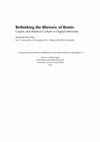
Media International Australia, 2011
How did ‘remix’, a post-production technique and compositional form in dance music, come to descr... more How did ‘remix’, a post-production technique and compositional form in dance music, come to describe digital culture? Is it an apt metaphor? This article considers the rhetorical use of remix in Lawrence Lessig's case for copyright reform in Remix: Making Art and Commerce Thrive in the Hybrid Economy (2008). I argue that Lessig's understanding of remix is problematic, as it seems unable to accommodate its musical namesake and obscures the particular history of media use in recent music culture. Drawing on qualitative analysis of popular music cultures, I argue that the conceptualisation of remix as any media made from pre-existing media is problematic. The origins of remix, I argue, provides a lens for thinking critically about the rhetorical uses of the term in current discourse and forces us to ponder materialities. My aim is not to dispute the word's contemporary meaning or attempt to establish a correct usage of the term – clearly a wide variety of creators call thei...

First Monday, 2014
The participatory, collaborative and open character of networked digital media is thought to disr... more The participatory, collaborative and open character of networked digital media is thought to disrupt and challenge romantic assumptions and ideals about authorship, authenticity and creative expression, concepts that underpin most copyright regimes. In this article I consider MP3 blogs in the mid-2000s, drawing on an earlier study of MP3 bloggers in the U.S. and U.K. (Borschke 2012a, 2012b). MP3 blogs, like Napster and other forms of unauthorized reproduction, are better understood as cultural practices and artifacts when considered alongside piracy’s long history. The aesthetic consequences and possibilities of forms of expression that are also methods of distribution, are clarified by identifying and examining a tension that connects MP3 blogging to other practices of unauthorized use: that is, the persistence of romantic ideals of creativity, authenticity and authorship even while seeming to deny and disregard them. By acknowledging the poetics of piracy practices (including the ...

New Media & Society, 2010
This article foregrounds the distinction between two compositional forms and creative strategies ... more This article foregrounds the distinction between two compositional forms and creative strategies in dance music — edits and remixes — as a way to gain a better understanding of the relationship between media use and media content, between producers and users, artifacts and events. It considers how the earliest disco edits in the 1970s were shaped by listeners (DJs and dancers) working in tandem with the material qualities and functional properties of vinyl records and other analog technologies and argues that while contemporary edits are made with digital tools, they continue to be in debt to their analog antecedents. In doing so this article critiques the enthusiastic adoption of ‘remix’ as a metaphor to describe digital culture and questions whether this rhetorical usage overshadows the aesthetic priorities and political implications of a variety of creative strategies that involve media use and re-use.
Continuum, 2012
This paper develops a theoretical framework for understanding mp3 blogging as a form of networked... more This paper develops a theoretical framework for understanding mp3 blogging as a form of networked expression. Drawing on a qualitative study of mp3 blogs, this paper sets forth an understanding of the practice as a performance of listening and the blog as a registry of understanding. It argues that mp3 blogs deserve special attention because of the particular audio format at its core-the mp3-a format that shapes the practice and its reception in particular ways. It considers not only how the practice generates perfect copies of such digital artefacts but also how the generation of provenance helps us to understand the propagation and circulation of copies in digital networks.
METROPOLIS-NEW YORK-, 1997
Artlink, Jun 1, 2010
I never really went looking for'the underground', but as a teenager in the mid 1980s I ... more I never really went looking for'the underground', but as a teenager in the mid 1980s I found one at the top of a steep set of stairs in an artist-run gallery in downtown London, Ontario. The place was known as the Forest City Gallery, and in addition to providing exhibition space for the area's visual artists and filmmakers, the gallery opened itself up to the city's diverse underground music scene, including teenagers like me. It was the promise and thrill of an all-ages show that first brought me here.
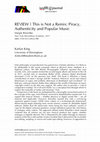
If the philosophy of reproductions has gained new scholarly attention, it is likely to be attribu... more If the philosophy of reproductions has gained new scholarly attention, it is likely to be attributable to the recent consumer return to physical music mediums in a digitized culture. The BPI (British Phonographic Industry) reported that vinyl records, CDs, and cassettes formed the second largest album sale format in the UK in 2017, second only to streaming (Butler 2018), whereas digital downloads decreased 23.4% on the previous year (ibid). This book is therefore a timely consideration of music's storage and the "material, rhetorical, social and cultural dimensions of copies and aesthetic dimension of distribution and circulation" (2) both pre-and post-internet. Rather than adding to the wealth of literature on music copyright control (as the title may suggest), the author aims to provide a "critical comparative reading" (9) of all such media "as a conceptual lens through which to explore the mutuality of matter and meaning" (164). Perspectives in the book are underpinned by a thoroughly researched analysis of the concept of the copy, from Platonic universal to Baudrillardian simulacrum. It is argued that musical formats-whether physical or digital sound files-are all material and duplicable. However, Borschke extends this with a convincing argument against Lessig's (2008) remix culture of a technologically determined, democratized utopia featuring more recent remixes created on affordable digital software. Rather than the democratic remix being the most authentic version of copy for the digital consumer-producer, Lessig's definition ignores the vital history of analogue remix culture. The approach offered within Borschke's book instead contends that all remixes are not new musical products but copies, whether analogue or digitally derived. This is illustrated by the author through an intensive analysis of the disco-edit and the creative freedom that it allowed for DJs via double turn tabling, sampling, or reel-to-reel audio tape editing. However, in opposition to
Many scholars of digital technologies and networks have called “remix” the defining characteristi... more Many scholars of digital technologies and networks have called “remix” the defining characteristic of digital culture, using it as shorthand for all that is new, digital and participatory. This chapter offers a critique of such claims by comparing and contrasting the history of remix as an analog cultural practice and artifact with the discourse about remix in digital culture. It considers the use of “remix” in contemporary discourse as a rhetorical strategy and asks whether the assumptions and aspirations that underpin this rhetoric obscure the aesthetic priorities and the political implications of analog copying practices.

First Monday, Oct 9, 2014
The participatory, collaborative and open character of networked digital media is thought to disr... more The participatory, collaborative and open character of networked digital media is thought to disrupt and challenge romantic assumptions and ideals about authorship, authenticity and creative expression, concepts that underpin most copyright regimes. In this article I consider MP3 blogs in the mid-2000s, drawing on an earlier study of MP3 bloggers in the U.S. and U.K. (Borschke 2012a, 2012b). MP3 blogs, like Napster and other forms of unauthorized reproduction, are better understood as cultural practices and artifacts when considered alongside piracy’s long history. The aesthetic consequences and possibilities of forms of expression that are also methods of distribution, are clarified by identifying and examining a tension that connects MP3 blogging to other practices of unauthorized use: that is, the persistence of romantic ideals of creativity, authenticity and authorship even while seeming to deny and disregard them. By acknowledging the poetics of piracy practices (including the aesthetic character of distribution and replication) we can begin to understand how new authenticities build up around networked expression and how the meaning of networked forms of expression, formats, practices and artifacts can change over time.
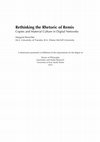
What roles do media technologies, artifacts, and users play in cultural change? This dissertation... more What roles do media technologies, artifacts, and users play in cultural change? This dissertation focuses on the shift from analog to digital media and concentrates on the role played by copies and replication in both systems of representation to identify and analyze material practices and rhetorical claims about their cultural influence. Specifically, it identifies and critiques the influence of recording formats qua copies in the history of three forms of composition in popular-music culture—remixes, disco edits, and MP3 blogs—to ask how something that is just the same can bring something new into being. I show that a focus on an artifact’s status as a copy—an object that can be said to be the same as other things—can illuminate our understanding of the cultural changes associated with digital and network technologies. By simultaneously identifying new cultural practices that are dependent on pure copying and resurrecting histories of media use, I critique the rhetoric of remix and participation as common tropes in digital discourse. This thesis examines the ways in which digital technologies were shaped by analog ones, as well as how and why analog formats persist in an era of digital networks. This exploration highlights the materiality of all media formats and shows how everyday users have played with and exploited material affordances over the past half-century. It also ponders the persistence of romantic ideals about authorship and expression within modes of expression and discourse that seem to challenge such constructions. What do these continuities and contradictions suggest about the networked experience and the social and cultural pleasures we derive from it? By teasing out unspoken assumptions about media and culture, this thesis offers fresh perspectives on the cultural poetics of networks and artifacts and poses questions about the promises and challenges of network visibility.
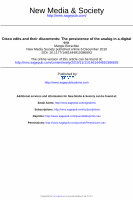
This article foregrounds the distinction between two compositional forms and creative strategies ... more This article foregrounds the distinction between two compositional forms and creative strategies in dance music – edits and remixes – as a way to gain a better understanding of the relationship between media use and media content, between producers and users, artifacts and events. It considers how the earliest disco edits in the 1970s were shaped by listeners (DJs and dancers) working in tandem with the material qualities and functional properties of vinyl records and other analog technologies and argues that while contemporary edits are made with digital tools, they continue to be in debt to their analog antecedents. In doing so this article critiques the enthusiastic adoption of ‘remix’ as a metaphor to describe digital culture and questions whether this rhetorical usage overshadows the aesthetic priorities and political implications of a variety of creative strategies that involve media use and re-use.


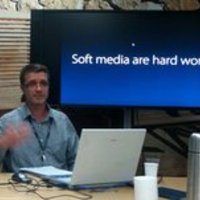


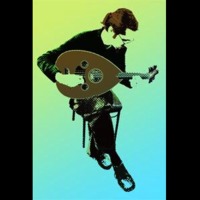





Uploads
Papers by Margie Borschke
Borschke examines the innovations that have sprung from the use of recording formats in grassroots music scenes, from the vinyl, tape and acetate that early disco DJs used to create remixes to the mp3 blogs and vinyl revivalists of the 21st century. This is Not A Remix challenges claims that 'remix culture' is a substantially new set of innovations and highlights the continuities and contradictions of the Internet era.
Through an historical focus on copy as a property and practice, This Is Not a Remix focuses on questions about the materiality of media, its use and the aesthetic dimensions of reproduction and circulation in digital networks. Through a close look at sometimes illicit forms of composition--including remixes, edits, mashup, bootlegs and playlists--Borschke ponders how and why ideals of authenticity persist in networked cultures where copies and copying are ubiquitous and seemingly at odds with romantic constructions of authorship. By teasing out unspoken assumptions about media and culture, this book offers fresh perspectives on the cultural politics of intellectual property in the digital era and poses questions about the promises, possibilities and challenges of network visibility and mobility. - See more at: http://www.bloomsbury.com/us/this-is-not-a-remix-9781501318924/